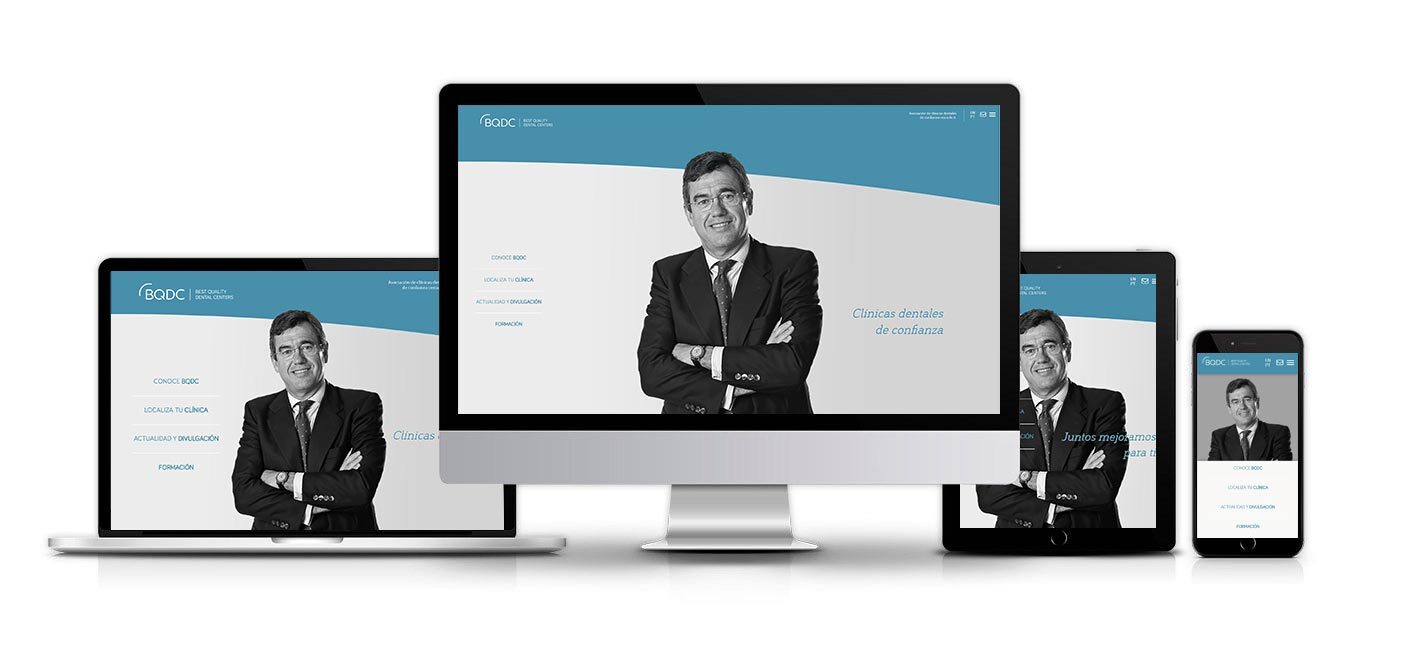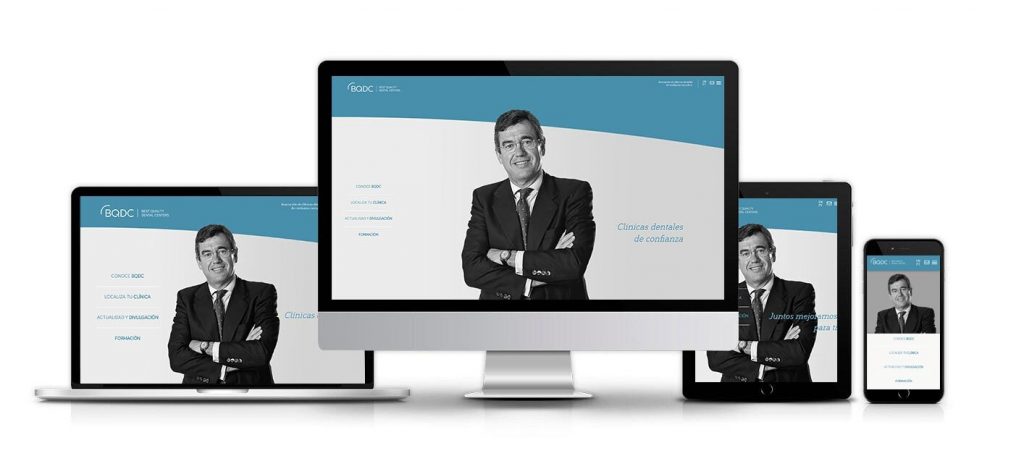The Impact of Responsive Web Design on User Experience and SEO

Responsive Web Design (RWD) has become a cornerstone in the creation of modern websites. This approach to design and development is based on the automatic adaptation of web content to the different screen dimensions of accessing devices, from smartphones and tablets to desktops.

Importance of Responsive Web Design
Enhances User Experience: A responsive website provides smooth and comfortable navigation on any device, avoiding the need for excessive zooming or scrolling. This results in a more intuitive and pleasant experience for users, translating into higher satisfaction and longer time spent on the site.
Multi-device Compatibility: RWD eliminates the need to create different versions of the same website for each type of device. With a single source code, the website automatically adjusts to the characteristics of each screen, optimizing content display and user interaction.
Improves SEO Ranking: Google and other search engines prioritize responsive websites in their results, considering them more accessible and user-friendly. This means that a website with RWD has a greater chance of appearing in the top positions of search results, increasing its visibility and traffic.
Cost-effectiveness and Efficiency: RWD reduces development costs and time since there is no need to create and maintain different versions of the website. Additionally, it facilitates content management and updates by centralizing them on a single platform.
In summary, responsive web design is an essential strategy for creating modern, adaptable, and accessible websites for all users, regardless of the device they use. Implement this approach to enhance user experience, optimize SEO, and increase the profitability of your website.
The Benefits of Responsive Web Design
The adoption of responsive web design (RWD) brings along a series of benefits that positively impact user experience, SEO performance, and the overall success of a website. Below, some of the most relevant impacts are analyzed in detail:
Enhanced mobile navigation
Automatic adaptation to any device: RWD adjusts the website’s design to the screen of the device being used, whether it’s a smartphone, tablet, or desktop. This facilitates navigation and interaction with the content, avoiding the need for excessive zooming or scrolling.
Intuitive and optimized interface: Website elements are automatically rearranged and resized for better viewing on each device. This creates a more intuitive and comfortable experience for mobile users, allowing them to access desired information quickly and easily.
Increased dwell time: The ease of navigation and optimized experience on mobile devices encourages users to spend more time on the website, increasing conversion rates and user engagement.
Lower bounce rates
Improved user experience: A responsive website reduces user frustration when navigating a site that isn’t adapted to their device, decreasing the likelihood of them quickly leaving the website, resulting in a lower bounce rate.
Higher user satisfaction: By providing a seamless and obstacle-free browsing experience on any device, user satisfaction increases, leading to greater loyalty and willingness to return to the website in the future.
Positive impact on SEO: Lower bounce rates are a positive indicator for search engines, which can improve the website’s positioning in search results.
Enhanced SEO performance
Prioritization by Google: Google and other search engines prioritize responsive websites in their results, considering them more accessible and user-friendly.
Improved indexing: A responsive website facilitates the indexing of its content by search engines, increasing the website’s visibility in searches.
Increased organic traffic: The combination of a better user experience and higher visibility in search results results in increased organic traffic to the website.
Responsive vs. Non-Responsive Design
Responsive Design
Fluid and adaptable: It automatically adjusts to any device, providing a comfortable and intuitive browsing experience on mobiles, tablets, and desktops.
Optimized interface: Elements are rearranged and resized for better viewing on each screen, facilitating reading and interaction with the content.
Increased satisfaction: User-friendliness and absence of obstacles create a more rewarding experience for users, increasing loyalty and time spent on the website.
Non-Responsive Design
Limited and frustrating: User experience varies significantly depending on the device. On mobile devices, navigation can be difficult, with illegible content or excessive scrolling.
Disorganized interface: Elements do not adapt to different screens, which can affect text readability and accessibility to buttons and menus.
Lower satisfaction: Poor mobile experiences can lead to user frustration, increasing bounce rates and reducing loyalty.
Device Compatibility
Responsive Design
Universal: Compatible with any device, from the latest smartphones to the oldest desktop computers.
Single maintenance: No need to create different versions of the website for each device type, simplifying content management and updates.
Scalable: Adapts to future technologies and devices without significant code modifications.
Non-Responsive Design
Limited: Requires creating different website versions for each device type, increasing development time and cost.
Complex maintenance: Managing and updating multiple website versions is complicated and error-prone.
Lack of scalability: Does not easily adapt to new technologies and devices, which may require expensive redesigns in the future.
Implications for Search Engine Ranking:
Responsive Design
Prioritized by Google: Google and other search engines prioritize responsive websites, considering them more accessible and user-friendly.
Better indexing: Facilitates content indexing by search engines, increasing website visibility in searches.
Increased organic traffic: Better user experience and greater visibility result in increased organic traffic to the website.
Non-Responsive Design
Penalized by Google: Google may penalize non-responsive websites, negatively affecting their ranking.
Poor indexing: Makes content indexing difficult for search engines, reducing website visibility in searches.
Lower organic traffic: Poor mobile experiences and reduced visibility negatively impact website organic traffic.
In summary, responsive web design offers a superior user experience, greater device compatibility, and better search engine ranking. It is the best option for creating modern, accessible, and successful websites in the digital age.
How Responsive Design Works
Fluid Grids:
They rely on percentages instead of pixels to define the dimensions of columns and rows, allowing the design to adapt to different screen sizes without distortion.
Flexible Images:
Various techniques are used to adapt images to different devices:
Images with Multiple Resolutions: Different resolution images are used for each device.
Srcset Attribute: Allows specifying different images for different screen sizes.
CSS Background Image: An image is used as the background of an element and its size is adjusted using CSS.
Media Queries:
Facilitate the application of varied CSS styles based on screen size, device orientation, or media type (e.g., screen, print).
They are used to modify the design, typography, content, and other aspects of the website.
Examples: Media Query Builder, Responsive Design Checker
Tools and Resources:
CSS Frameworks: Bootstrap, Foundation
CSS Preprocessors: Sass, LESS
JavaScript Libraries: Media Queries JS, Respond.js
Tips for Responsive Web Design:
Design Planning: Define the website structure and how it will adapt to different devices.
Use of Relative Units: Employ percentages, em (em) units, and rem (rem) units to define element sizes.
Image Optimization: Use images with various dimensions and resolutions.
Testing on Different Devices: Use online tools and emulators to verify proper display on various devices.
Responsive web design is an essential technique for creating accessible and successful websites in the digital age.
Why Every Website Should Be Responsive
Today, internet access is carried out through a wide variety of devices, from smartphones and tablets to desktops and laptops. This multi-device reality demands that companies adapt their websites to offer an optimal experience on any screen.
Responsive web design (RWD) has become a fundamental tool to achieve this goal. This technique allows the website design to automatically adjust to the screen size of the accessing device, without compromising quality or functionality.
Importance of RWD for companies
- Improved user experience: A responsive website provides smooth and comfortable navigation on any device, increasing user satisfaction and time spent on the site.
- Expanded reach: It allows reaching a broader audience, including users accessing the website from mobile devices.
- Enhanced brand image: A responsive website conveys a professional and modern image of the company.
- Cost-effectiveness: It reduces costs by avoiding the need to create different versions of the website for each type of device.
- SEO positioning: Google and other search engines prioritize responsive websites.
- Consequences of not having a responsive website:
Poor user experience: Users may encounter difficulties navigating and accessing website content on mobile devices.
Loss of potential customers: Users may abandon the website if the browsing experience is unsatisfactory.
Damage to brand image: A non-responsive website may project an outdated and unprofessional image of the company.
Deterioration of SEO positioning: Non-responsive websites may have lower rankings in search results.
In today’s multi-device environment, responsive web design is a necessity for companies to remain competitive and relevant. Investing in a responsive website is a strategic decision that can bring a myriad of benefits for the success of the company.
Conclusion
In conclusion, Responsive Web Design (RWD) has emerged as a critical element in modern website development, catering to the diverse array of devices through which internet access occurs. Its significance lies in its ability to seamlessly adapt web content to varying screen sizes, from smartphones to desktops, thereby ensuring an optimal user experience.
The benefits of RWD for businesses are manifold. Firstly, it enhances user satisfaction by providing smooth navigation across devices, leading to prolonged engagement on the site. Secondly, RWD expands the reach of a website, accommodating users accessing it from different devices. Moreover, it bolsters the brand image, projecting professionalism and modernity. Additionally, RWD proves cost-effective by eliminating the need for multiple website versions. Lastly, it positively impacts SEO, as search engines prioritize responsive websites.
Conversely, the absence of RWD can have detrimental effects, including a subpar user experience, potential loss of customers, harm to brand reputation, and diminished SEO performance.
In the contemporary multi-device landscape, investing in responsive web design isn’t just beneficial; it’s imperative for businesses aiming to stay competitive and relevant. By embracing RWD, companies can ensure their websites remain accessible, engaging, and successful in the digital realm